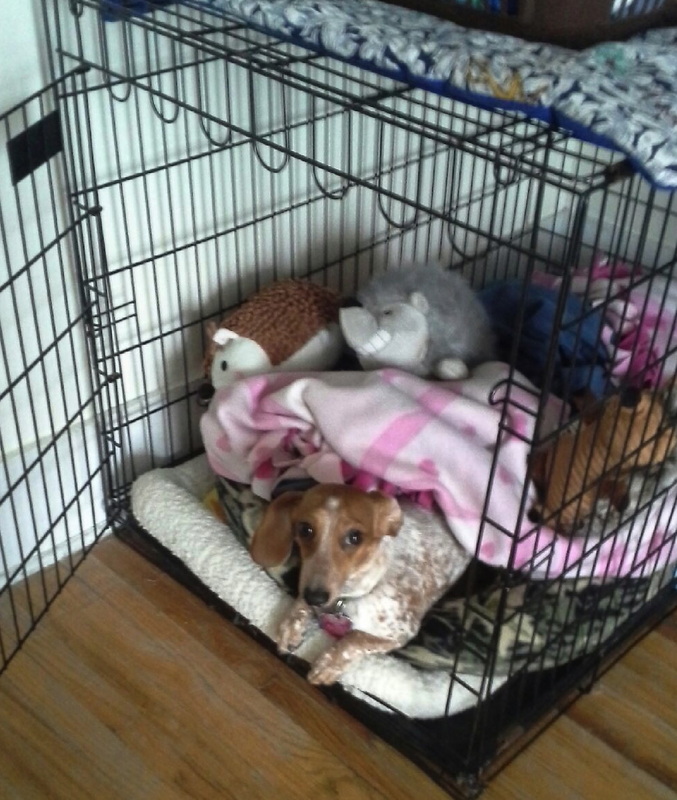House training helperBecause of the instinct to see it as their den, most dogs will not soil their crate. If you're training a new puppy, take advantage of that instinct by keeping them in their crate overnight and in between walks. Most puppies can't control their bladder for extended periods until they are 4-6 months old, so it is important to get your puppy outside or to indoor papers as often as possible. Take your puppy to one chosen place outdoors (or to papers if you are paper training) every 2-4 hours, especially at the times when they need to eliminate (after meals, immediately after awakening from and nap and soon after beginning play). When your pup does their business where and when they should, give them lots of praise and play with them as a reward. If your puppy gets distracted and doesn't go when you take them out, don't let them play. Return them to their crate, and take them back out again 5 minutes later. The second time usually works.
After house trainingAfter your dog is house trained, that crate will still be useful; this time to prevent household destruction from teething at 4-6 months and that awful play destruction that continues through adolescence (up to 2 years). Rawhide strips, rope toys, and fleece toys are favorites. Always supervise your pet when chewing on a new toy to ensure he/she does not swallow pieces whole. If they chew on something they shouldn't, say "NO!" and gently direct them to a favorite toy. Bitter sprays (sold over the counter) applied to objects are also quite helpful to deter a dog. Make sure to give your dog adequate exercise and play. Obedience training also helps to work your young dog's mind. When you are not home to supervise, the crate can be a blessing.
After your dog finally gets over their chewing stages, give them access to one puppy-proofed room at a time. Soon they will graduate to the whole house. Some dogs do not need to be crated into adulthood, but if your dog seems to love their crate, leave it out for them to relax and sleep in. |
Choosing a crateCrates come in different styles. The most common types are the pressed fiberglass models and the open-wire cages. Both are available in most pet supply stores. Fiberglass crates are the sturdiest. Many of the wire cages fold into the shape of a suitcase for easy transport. Make sure your crate is large enough to be comfortable for your dog at all stages of their life. They should be able to fully stand up, lie down, and chew on a toy.
|
Proudly powered by Weebly

